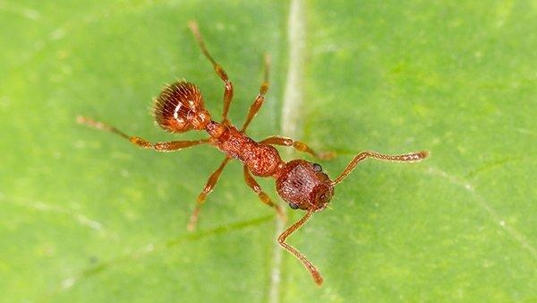It’s a warm, sunny day and you’re relaxing outdoors. You’re walking barefoot across the lawn when suddenly a sharp pain shoots through your body. Then another. And another. You’ve stepped on a fire ant mound and now you’ve got aching welts all over your feet. You can’t enjoy fresh air and nice weather with the threat of a fire ant attack looming in your backyard. These pests are more than a nuisance, but just how dangerous are fire ants in Plano?
About Fire Ants
Fire ants are found in warm climates around the world and are not any one species but several species that exhibit similar traits and behaviors. In the U.S., the most typical fire ant encountered is the invasive red imported fire ant or RIFA. These RIFAs are originally from South America but have made their way to the United States (and around the world) where they have found tremendous success in conquering the territory of native ant species.
Most fire ants measure ¼ inch in length and have a red or reddish-brown color. They built massive colonies led by multiple queens, which made them especially difficult to control. While some ant species are picky about their diet, RIFAs will eat just about anything.
How Dangerous Are Fire Ants?
You may wonder if fire ants bite or sting. Well, the answer is both. These aggressive ants will first latch onto their victims with their strong jaws and then thrust their venomous stinger into the flesh. The pain is similar to a sting from a wasp and can be manageable in isolated attacks. But fire ants tend to swarm when threatened, and many ants have been known to sting at once, multiplying the pain exponentially.
Most fire ant attacks are not medically significant and will heal over time. However, much like spiders and other venomous insects, those who are allergic to fire ant stings are in real danger. A sting from a fire ant can result in anaphylactic shock and threaten the life of an individual with fire ant allergies.
What Attracts Fire Ants To My Property?
Fire ants are motivated primarily by food, and if you’ve got an abundance of prey insects, fruit, garbage, or anything else edible, you’re probably inviting fire ants to infest your property. And like any living thing, fire ants need water to survive and will often prowl near sources of moisture. Controlling these factors can help prevent fire ants from establishing a colony on your property. Here’s what you can do:
- Dispose of garbage properly. Make sure that all food waste is disposed of in a trash bag and placed in a receptacle with a heavy, tight-fitting lid. Try to keep garbage bins away from any buildings and ensure lids are always closed.
- Address the mess. Wipe down surfaces for crumbs and spills when eating or cooking. Be sure to sweep and mop floors to eliminate any food debris that could attract ants. Even the smallest morsel of food can send an army of ants marching into your kitchen.
- Control moisture. Check for leaking pipes and spigots and seal as needed. Clear any blockages from gutters to encourage water to drain away from your property.
- Keep up with yard work. Although not their only source of food, fire ants will prey on other insects. Mow the lawn often and trim other vegetation to reduce hiding spots for bugs that fire ants eat.
If you want to get rid of the fire and infestation on your Plano property, your best bet is to get in touch with All-Safe Pest & Termite. We provide total pest control for homes and businesses suffering from unwanted pests like fire ants. With reasonable prices and exceptional service, you can feel good about choosing us. Contact All-Safe Pest & Termite today.

